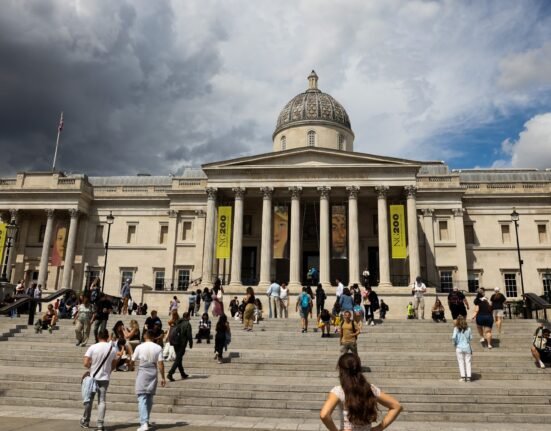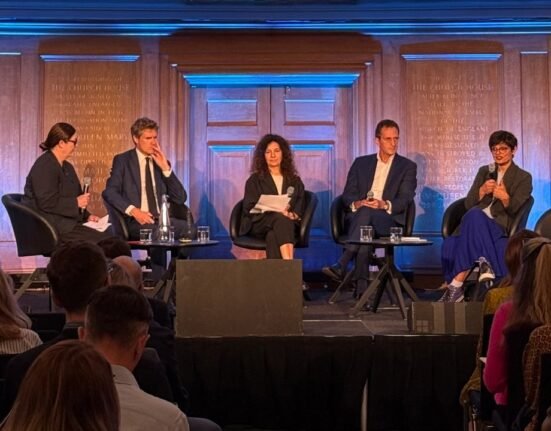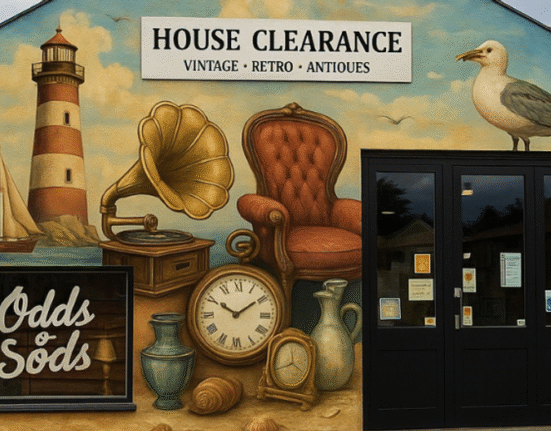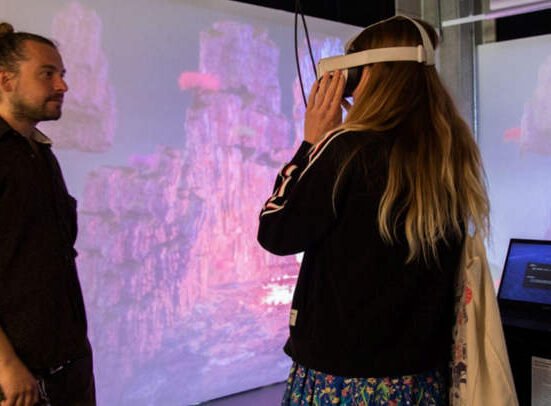Q: What’s the state of the art market?
Over the last decade, the size of the art market has maintained a relatively constant level, remaining close to the $60 billion mark. Although this seems like a large number, it significantly falls short when compared to FedEx’s revenue, which exceeded $90 billion last year. So all participants in the art world, including auction houses, galleries, and art advisors, collectively generate less income than a single transportation company.
A closer examination reveals a significant disparity. The prices of artworks at the very high end, constituting the top 0.1%, have experienced a substantial increase. These are the ones often featured in headlines boasting record prices. However, most of the remaining artists have experienced declining sales due to a decrease in the number of art buyers. Essentially, we can speak of two art worlds.
Q: Given that dynamic, is art a good investment?
At the very top end of the market, art can be a good investment. Renowned artists like Picasso, Monet, Warhol, and Basquiat—the household names showcased in institutions such as the Museum of Modern Art—have done well. These artworks, priced at $1 million or more, are actively traded on the secondary market through auction houses such as Sotheby’s and Christie’s and collectors often see a strong return.
Purchasing art solely as an investment is not advisable. Buy art because you love it, because you want to support an artist, because you want to support a community, because you want to support a gallery.
However, beyond this exclusive tier, art is not the best investment. As our research shows, most artworks offer little to no returns. The market lacks liquidity, making it challenging to resell a purchased piece. Whether at a reduced price or a significant markdown, the likelihood of recouping the investment is minimal.
The question is, why buy art then? Purchasing art solely as an investment is not advisable. Instead, buy art because you love it, because you want to support an artist, because you want to support a community, because you want to support a gallery. I call this “responsible buying.”
Q: Would you provide some context by explaining your research on the economics of the art world, particularly the paper that was published in Science?
For that paper, my colleagues and I analyzed data from approximately half a million artists globally. Our findings underscore a critical determinant of an artist’s success—the network of galleries and museums showcasing their work. We observed that a select cohort of interconnected galleries and museums exerts a substantial influence on an artist’s success, while the broader array of art institutions has minimal impact on an artist’s financial standing.
This underscores the significance for artists to be part of this central network. Failing to integrate within the first 5 to 10 exhibitions of their career markedly diminishes the likelihood of achieving financial success within the art world.
Q: Does admittance to that network demonstrate that the art is great?
There are no objective criteria to define what “great art” is. When people ask me, “Do you think this is great art?” I always say, “What do you think?” because it’s so subjective. Essentially, art’s greatness is a personal and subjective judgment, varying from individual to individual.
Q: So what drives the economic value of art?
Based on our research, the value of art is shaped by a few galleries and museums exhibiting a specific artist. So the decisions made by those who run these institutions hold considerable value in defining the perceived worth and significance of an artist within the art world.
Q: Who benefits from this approach?
The artists that are part of this network, powerful art collectors who are often sitting on the boards of the institutions, and the few gallerists who managed through their entrepreneurial skill set and impressive vision to build up galleries that have that impact.
Drawing from my experience of more than two decades as an academic and also as an entrepreneur deeply embedded in the art world, my work attempts to unravel the complexities of the art market’s black box. By shedding light on relationships and dynamics, I aim to inject much-needed transparency into a domain often perceived as mysterious to help introduce a new group of collectors to the art market. I believe that the art market has the potential to triple in size by tapping into a new group of buyers—individuals who are already going to art events but have not yet made art purchases.
Q: How did you come to do this work?
At a very young age, I socialized with artists who introduced me to the art world. Understanding the challenges they faced in making a living, I began selling their art to support their passion and to finance my studies as a student. When I tried to improve my art-selling skills, I searched for literature on the topic, only to find none. I wanted to understand why some gallerists are so successful and others aren’t. This led me to focus my PhD on the success factors of art galleries, which resulted in the publication of my first book, Management of Art Galleries.
Following this, the natural progression was to explore the success factors of artists. I subsequently published How To Become A Successful Artist, a pragmatic book rooted in solid academic research, emphasizing the necessity of business skills for their success. Currently, I’m about to publish a new book, specifically designed for collectors. How To Collect Art is geared towards assisting new buyers in navigating the art market.
Q: You also teach an unusual class at Yale, which brings MBA and MFA students together.
It’s a unique class that I enjoy teaching. My aim is to educate a new generation of collectors and artists. I bring in world-class experts from the art world who often have varying opinions to provide students with a comprehensive understanding of the art market. Over the years, our guest speakers have included luminaries such as Jeff Koons, the world’s most expensive living artist; Charles Stewart, the CEO of Sotheby’s; Amy Cappellazzo, the number-one art advisor; Mike Steib, the CEO of Artsy, the most-known art tech company; BEEPLE, the digital artist who sold one work for $60 million during the NFT hype; the artist KAWS; and many others.
Students take on the role of introducing and interviewing the guests in front of the class. I’m consistently fascinated by the thought-provoking questions the students pose and how they challenge guest speakers with fresh, unbiased perspectives on the art market. Their inquiries also serve to constantly push me to reassess established standards within the art world.
Q: Inevitably, there’s a conceptual component to understanding art, but the class has a very practical bent.
The class imparts theoretical knowledge, insights from leading art world experts, and opportunities for networking. Each class kicks off with one of my art students presenting their work to the group, offering a unique and valuable experience as they discuss their art in front of 100-150 people. To facilitate interactions between artists and business students and to cultivate connections with the art community in New Haven, we arrange mixer events following the class. These events bring together artists from NXTHVN and other Yale School of Art programs with MBA students.
Prospective buyers want to know three things before making a purchase: the cost of the artwork, whether the price is fair, and if it’s a sound investment.
Additionally, field trips to art fairs such as the Armory, SPRING/BREAK, and PHOTOFAIRS New York provide a first-time exposure to fairs for many, whether they’re business or art students.
During these fairs, students are tasked with approaching gallerists for prices—an often awkward and intimidating experience. I require students to inquire about prices to help them understand the difficulty of buying art and why the art world struggles to convert interested visitors into buyers. Research indicates that displaying a price next to artwork increases the likelihood of a sale fourfold. Despite this, galleries often withhold prices. That’s surprising, given that prospective buyers want to know three things before making a purchase: the cost of the artwork, whether the price is fair, and if it’s a sound investment.
Q: If I walk into a gallery, how many of those questions are going to be clearly answered for me?
None.
Q: …which is going to make me walk out.
Exactly.
Q: This sounds like a situation where somebody who’s willing to break the rules should be able to break through.
That’s happening. But it’s a marathon. The art market has been slow to embrace innovation, except for the recent pivot forced by COVID, which led to a more significant utilization of the internet as a tool for art sales. Some interesting ventures are being created in the art world to target rookie buyers. It’s this group that shows the largest potential to purchase art.
Consider Art Basel in Miami, drawing 80,000 visitors, yearly; however, only a fraction of them buy anything. I believe that a considerable percentage of this audience possesses the financial capacity to make purchases but refrains due to the barriers created by the gallery world. Resolving these hurdles for the rookie buyers holds the key to unlocking substantial potential among aspiring art buyers.
Q: How much does it cost to buy art?
That’s another very simple explanation for why so few people buy art: art is too expensive in galleries. The average price point in a gallery is around $9,000. Most buyers would like to spend less than $5,000.
Q: Going back to the three questions people want answered before buying…
Is art a good investment? In most cases, no.
Is the price fair? You have nothing to compare a price to, as you don’t know if the same artist’s work is available at a different price in another gallery. This confuses potential buyers.
In my class, I encourage students—maybe after their first bonus or whenever they feel ready—to make their first art purchase at a comfortable and financially secure price point. Even years after graduation they can draw on the network of artists we’ve built in class and at our mixer events.
The steps to purchase art are simple: Identify a local artist in your community, reach out to them, purchase their work, recognizing that it’s not just a financial investment but a commitment to the artist, the gallery, and the community. It’s a form of philanthropy—responsible buying entails supporting artists whose work you value, and in return gaining emotional inspiration from the artwork.Women, people of color, and members of the LGBTQ+ community remain significantly underrepresented in the art market. While there have been recent shifts with museums and collectors finally adding their works to collections, the gap is substantial, and achieving equality will take many more years. Buying art from artists within these communities is a meaningful step towards addressing this imbalance.
Q: The artists in that elite network identified by your research are famous and very successful financially. How do artists outside that tiny group make a living?
Every year, a million artists graduate from art schools worldwide. However, the top galleries typically accept only one or two new artists annually. Relying solely on securing one of these coveted slots is not a viable strategy. Artists are on their own.
The number-one advanced degree that leads into unemployment in the U.S. is an MFA. This highlights the need for art schools to better prepare MFA students for the post-graduation landscape. Essentially, artists must embrace entrepreneurship and acquire essential business skills to navigate the art market, secure gallery representation, determine pricing strategies for their works, effectively present themselves, and cultivate their brand.
Empowering artists to build their own brand is crucial. I believe in a holistic approach, ensuring that artists are equipped not only with creative but also the entrepreneurial skills necessary for a sustainable career in the arts. My courses at Yale specifically focus on providing the latter.
Q: What about artists who just want to do their work and live in a way they find meaningful? Do they need to follow that entrepreneurial path?
In my book How To Become A Successful Artist, I outline three fundamental goals that drive most artists. The first is financial—artists need to generate income to cover bills and sustain their practice. The second is socio-ethical—artists aspire to work in alignment with their personal moral standards. The third revolves around being accepted by a reference group, whether that’s close friends, artists from their upbringing, or creators whose approval matters.
The challenge for each artist lies in finding the right balance among these three goals. Regardless of the specific balance chosen, cultivating business skills and adopting an entrepreneurial mindset are essential components for achieving success in the art world.
Q: Looking forward, where do you see the art market going?
In the 1930s, Hollywood studios were the powerful players. Then power moved to the actors. Similarly, in the current art market, galleries have significant influence. However, I anticipate a power shift to artists over the next 15 to 20 years, if artists succeed in developing their own brands. Today’s powerful gallerists won’t go away, as they are doing a much-needed job in supporting their artists and nurturing their careers. But some of the smaller gallerists will take on a new role: artists’ managers.
In line with that power shift, I predict NFTs will become a standard technology in the art market. Contrary to the common misconception that NFTs equal digital art, NFTs are, in fact, a technology. While the initial hype around digital art NFTs may have faded, the underlying NFT technology will serve as a digital certificate of authenticity that artists can attach to their paintings. This not only establishes clear provenance, reducing the need for intermediaries and enhancing art liquidity, but also becomes a source of royalties for the artist each time the artwork is sold and the NFT certificate transfers to a new owner.
Q: Do you think more people are becoming responsible collectors?
I am optimistic that we will witness a rise in responsible collectors. Historically, art auctions were exclusive to experts, with dealers purchasing works at auctions and then selling them to customers. However, in the ’70s and early ’80s, Sotheby’s and Christie’s opened their bidding rooms to non-experts. This shift was transformative, as auction houses began targeting a broader audience rather than solely marketing to dealers. Consequently, auctions evolved into the societal events they are today, fostering increased art purchases and doubling the art market’s revenue.
My hope is that a similar transformation will occur in the primary market, welcoming a larger audience into the art world, motivated not solely by investment but by a desire to find emotional value and to support artists, communities, and galleries.







